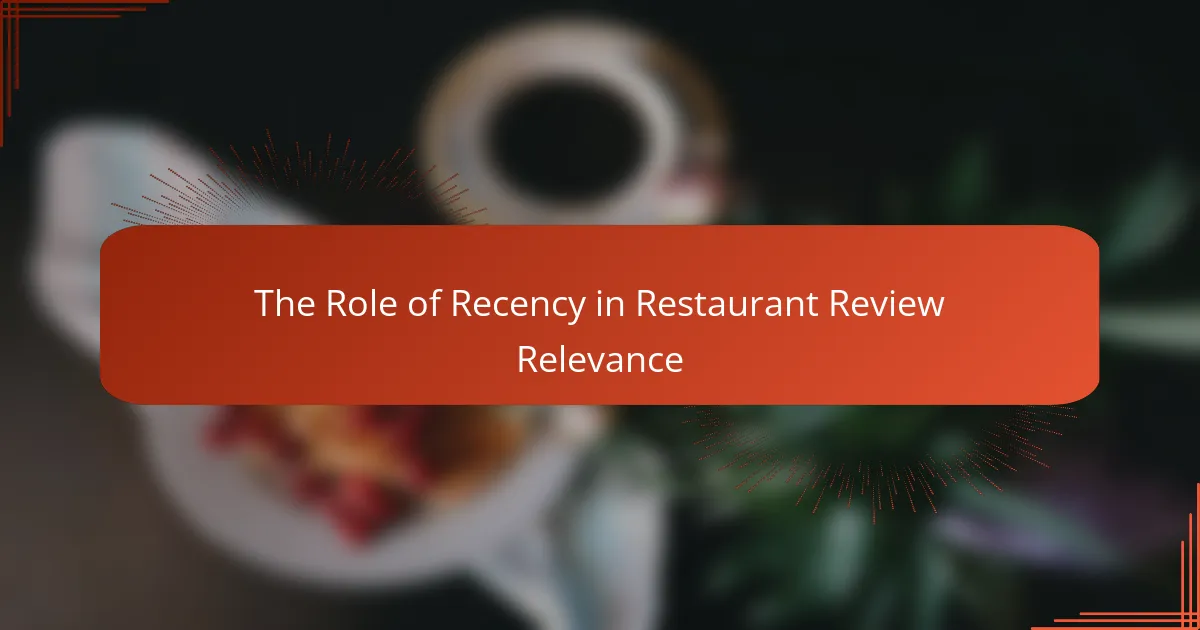What are the key metrics for restaurant and café reviews?
The key metrics for restaurant and café reviews include star ratings, review volume, average rating score, sentiment analysis, and response rate. These metrics provide insights into customer satisfaction and can significantly influence potential diners’ decisions.
Star ratings
Star ratings are a straightforward way for customers to express their satisfaction with a restaurant or café, typically ranging from one to five stars. A higher star rating often correlates with better overall experiences, making it a crucial metric for attracting new customers.
However, it’s important to consider that star ratings can be subjective and may vary based on individual expectations. A restaurant with a solid four-star rating is generally viewed more favorably than one with three stars, but context matters.
Review volume
Review volume refers to the total number of reviews a restaurant or café receives. A higher volume of reviews can indicate a popular establishment, providing a more reliable picture of customer experiences. For example, a restaurant with hundreds of reviews is likely to offer a consistent experience compared to one with only a few.
However, it’s essential to analyze the review volume alongside the average rating. A high number of reviews with a low average rating may signal issues that potential customers should consider.
Average rating score
The average rating score is calculated by taking the total star ratings and dividing them by the number of reviews. This metric helps summarize overall customer satisfaction in a single number, making it easier for potential customers to gauge the quality of a restaurant or café quickly.
For effective evaluation, aim for an average rating above four stars. Scores below this threshold may indicate areas needing improvement, while consistently high scores can enhance a restaurant’s reputation.
Sentiment analysis
Sentiment analysis involves examining the language used in reviews to determine the overall emotional tone—positive, negative, or neutral. This metric can reveal deeper insights beyond star ratings, highlighting specific strengths and weaknesses in customer experiences.
Utilizing sentiment analysis tools can help restaurant owners identify common themes in feedback, allowing them to address issues proactively and enhance customer satisfaction.
Response rate
The response rate measures how often a restaurant or café replies to customer reviews. A high response rate indicates that the establishment values customer feedback and is engaged with its patrons, which can foster loyalty and trust.
To maintain a positive image, aim for a response rate of at least 30-50%. Responding to both positive and negative reviews shows commitment to customer service and can mitigate the impact of unfavorable feedback.
How do star ratings impact customer decisions in major cities?
Star ratings significantly influence customer decisions in major cities by serving as a quick reference for quality. Higher ratings often lead to increased patronage, as consumers tend to trust the opinions reflected in these scores.
Influence on foot traffic
In bustling urban areas, restaurants and cafés with higher star ratings typically experience greater foot traffic. Customers are more likely to choose establishments with ratings of four stars and above, as these ratings suggest a better dining experience.
For example, a café with a 4.5-star rating may attract significantly more visitors than one with a 3-star rating, particularly in competitive neighborhoods. This increased foot traffic can lead to longer wait times, which can further enhance the perceived popularity of the venue.
Correlation with sales
Star ratings are closely correlated with sales figures, especially in major cities where competition is fierce. Establishments with higher ratings often see a boost in revenue, as positive reviews can convert casual browsers into paying customers.
Research indicates that a one-star increase in ratings can lead to a sales increase of 5-10%. This is particularly true for restaurants that rely heavily on online platforms for visibility and customer acquisition.
Effect on online visibility
Star ratings play a crucial role in online visibility, impacting how restaurants and cafés rank in search results. Higher-rated establishments are more likely to appear at the top of search engine results and review platforms, making them more accessible to potential customers.
Additionally, platforms like Google and Yelp often prioritize businesses with better ratings in their algorithms, further enhancing their visibility. This means that maintaining a high star rating is essential for attracting new customers and retaining existing ones in a digital-first world.
What platforms provide restaurant and café reviews?
Several platforms are popular for providing restaurant and café reviews, each with unique features and user bases. Key platforms include Yelp, Google Reviews, Tripadvisor, and Facebook, which collectively shape consumer perceptions and dining choices.
Yelp
Yelp is a widely recognized platform that allows users to rate and review restaurants and cafés based on their experiences. It features a star rating system, written reviews, and user-uploaded photos, making it a comprehensive resource for potential diners.
Businesses can claim their Yelp pages to respond to reviews and manage their online presence. Engaging with customers through responses can enhance reputation and encourage more positive feedback.
Google Reviews
Google Reviews integrates seamlessly with Google Maps and Search, allowing users to leave ratings and comments directly on business listings. This platform is crucial for visibility, as many users rely on Google for quick information about local dining options.
Businesses should encourage satisfied customers to leave reviews on Google, as higher ratings can improve search rankings and attract more visitors. Responding to reviews, both positive and negative, can foster trust and show commitment to customer satisfaction.
Tripadvisor
Tripadvisor specializes in travel-related content, including restaurant and café reviews. Users can rate establishments, write detailed reviews, and upload photos, often focusing on the overall dining experience.
Restaurants should actively manage their Tripadvisor profiles by responding to reviews and updating information. High ratings on this platform can significantly influence travelers’ dining choices, making it essential for businesses in tourist areas.
Facebook
Facebook allows users to leave reviews and ratings on business pages, making it a social platform for sharing dining experiences. Reviews on Facebook can reach a wide audience, as friends and followers can see recommendations and feedback.
Restaurants should maintain an active presence on Facebook by engaging with customers and encouraging reviews. Positive interactions can enhance community ties and drive more patrons to the establishment.
How to analyze review sentiment effectively?
To analyze review sentiment effectively, focus on understanding the emotions and opinions expressed in customer feedback. This involves utilizing various tools and methods to quantify and interpret sentiments, enabling businesses to make informed decisions based on customer experiences.
Natural language processing tools
Natural language processing (NLP) tools help automate the analysis of text data from reviews. These tools can identify keywords, phrases, and overall sentiment, allowing for quick assessments of customer feedback. Popular NLP tools include Google Cloud Natural Language, IBM Watson, and Microsoft Azure Text Analytics.
When choosing an NLP tool, consider factors such as ease of integration, language support, and pricing. Many tools offer free tiers or trial periods, making it easier to test their capabilities before committing to a paid plan.
Sentiment scoring systems
Sentiment scoring systems assign numerical values to the emotions expressed in reviews, typically on a scale from negative to positive. This scoring helps businesses quantify customer sentiment and track changes over time. Common scoring systems include star ratings, numerical scales, or sentiment polarity scores ranging from -1 (negative) to +1 (positive).
When implementing a sentiment scoring system, ensure consistency in how scores are assigned. Regularly review and adjust your scoring criteria to reflect changes in customer expectations or industry standards.
Manual review analysis
Manual review analysis involves reading and interpreting customer feedback without automated tools. This method allows for deeper insights into specific issues and trends that may not be captured by automated systems. It can be particularly useful for understanding nuanced sentiments or identifying recurring themes in reviews.
To conduct effective manual analysis, create a structured approach. Consider categorizing reviews based on sentiment, identifying common keywords, and summarizing key points. This process can be time-consuming but often yields valuable insights that enhance customer experience strategies.
What are the best practices for responding to reviews?
Best practices for responding to reviews include being prompt, professional, and personal. Engaging with customers in a thoughtful manner can enhance your restaurant’s reputation and foster customer loyalty.
Timely responses
Timely responses to reviews are crucial for maintaining a positive image. Aim to reply within a few days of receiving a review, as this shows customers that you value their feedback and are attentive to their experiences.
Consider setting a goal to respond to at least 80% of reviews within 48 hours. This quick turnaround can significantly impact customer perceptions and encourage more patrons to leave feedback.
When responding, acknowledge the reviewer’s experience and express gratitude for their input. For example, if a customer mentions a specific dish they enjoyed, highlight that dish in your response to create a personal touch. Avoid generic replies, as they can come off as insincere.




